Burma – Monastery Life
The visit to a monastery turned out to more than capturing the expected photogenic motives…

The Shwe Yaunghwe Kyaung monastery close to Inle Lake is mostly visited for it´s ancient teak thein (ordination hall) with its unique oval windows. They create perfect frame for portraits of novices.
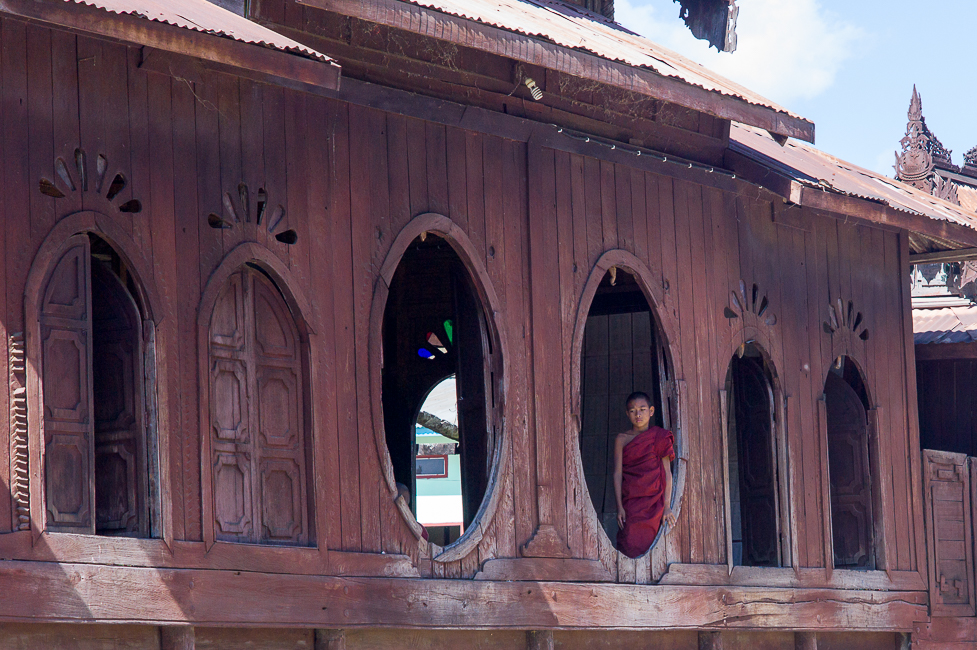
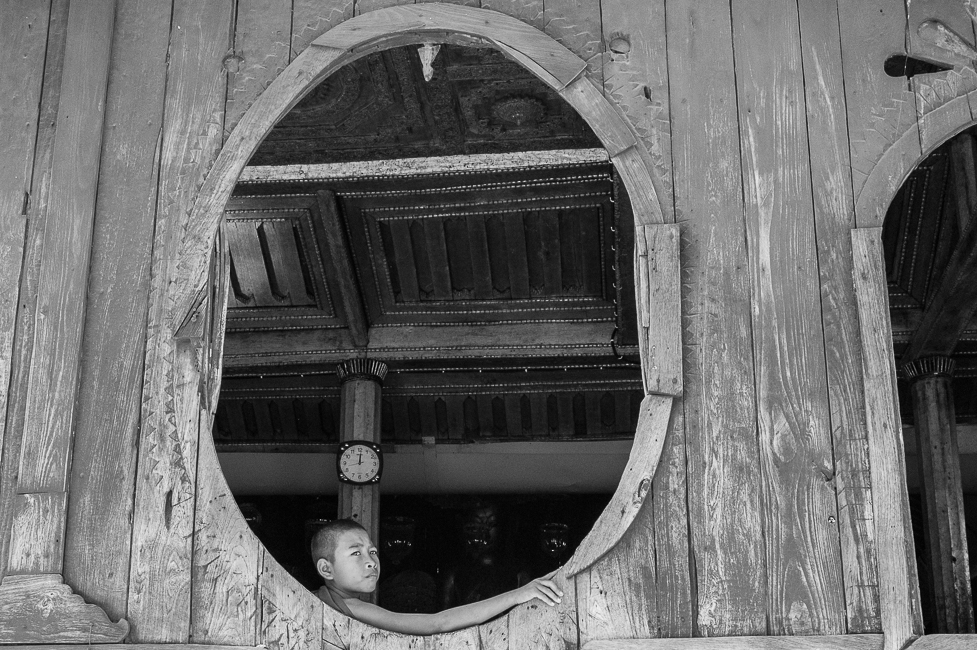
And of course I was not alone visiting. Conveniently located on the way to the lake a lot of tourist groups stop to take pictures of the young monks in the windows and they are used to it. But I found other aspects even more interesting and visited the monastery twice during my stay at the lake. Arriving early you can capture for example a monk taking a sunbath or the early morning toilet.

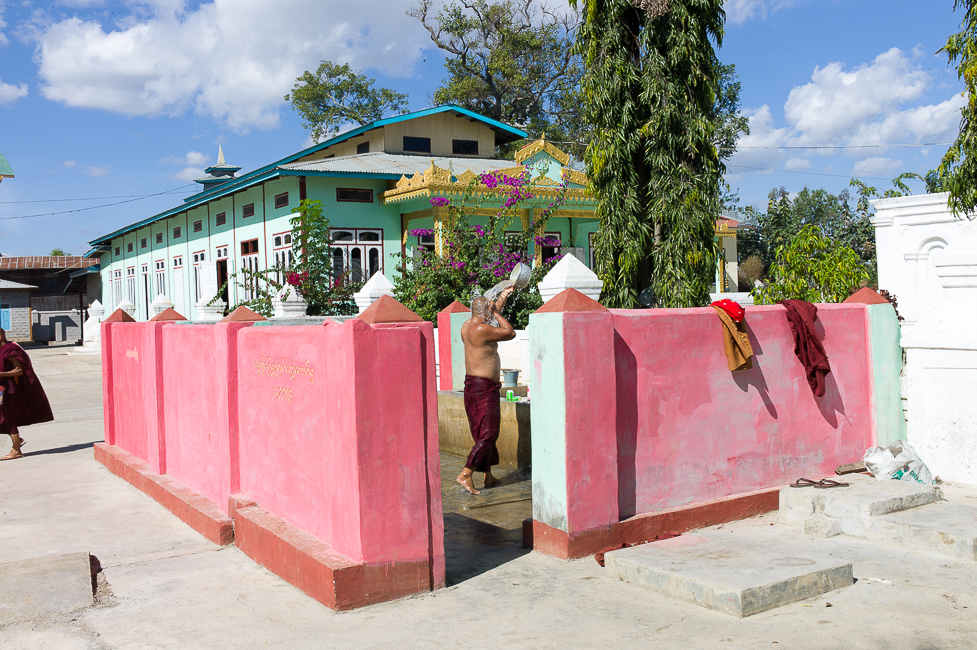
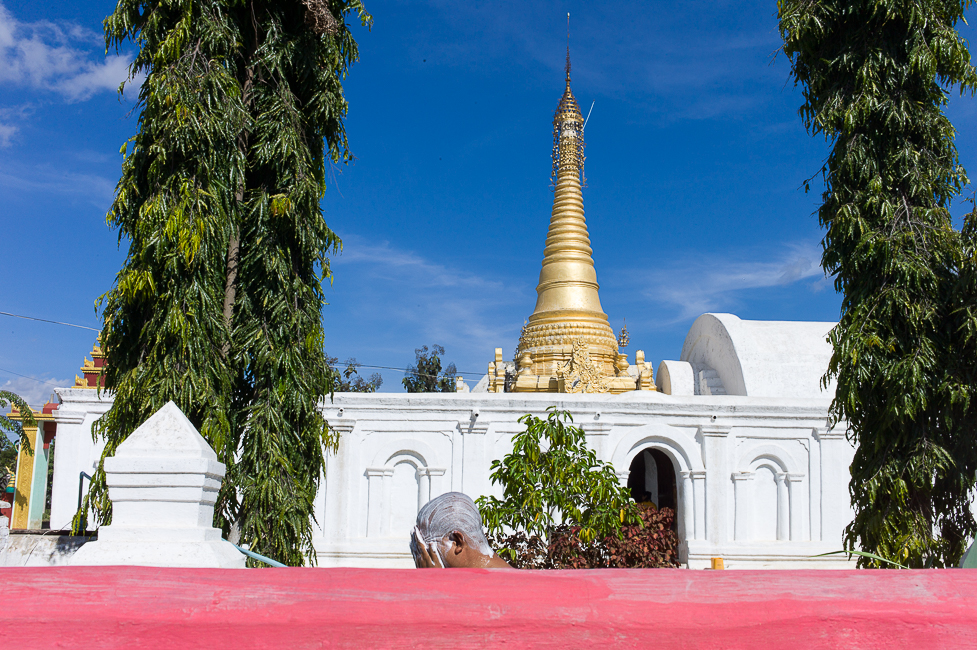
Seeing tourist groups walking into the thein I also made my way around. I found it very charming to see the buddha statue in such an old teak thein.
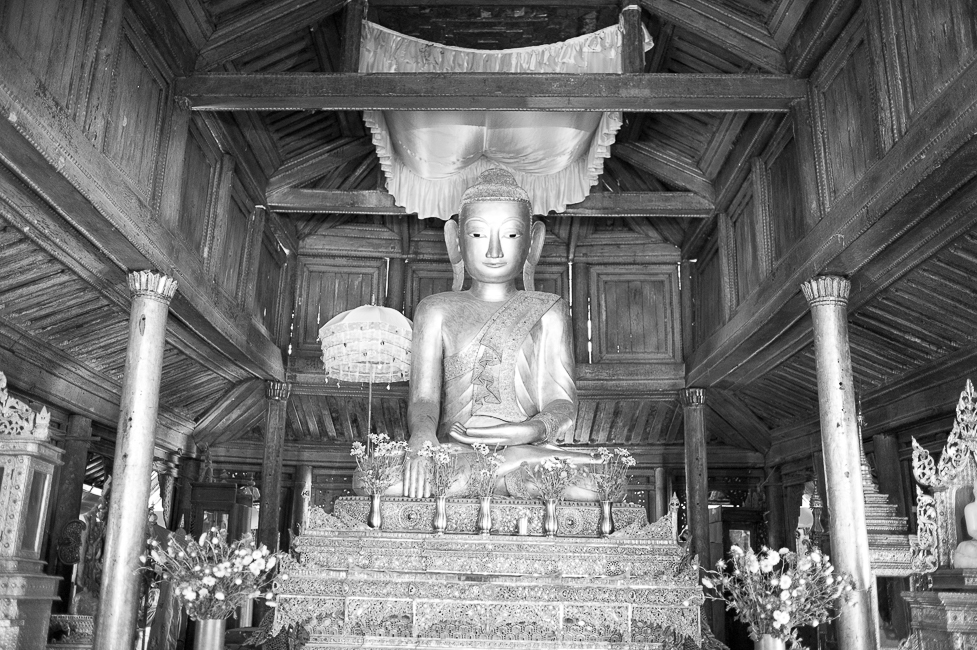
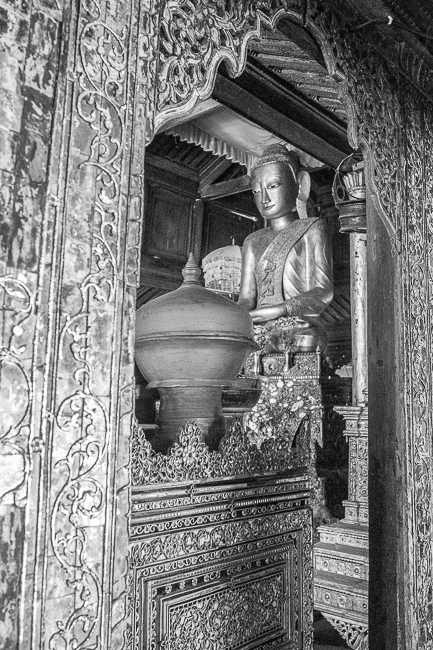

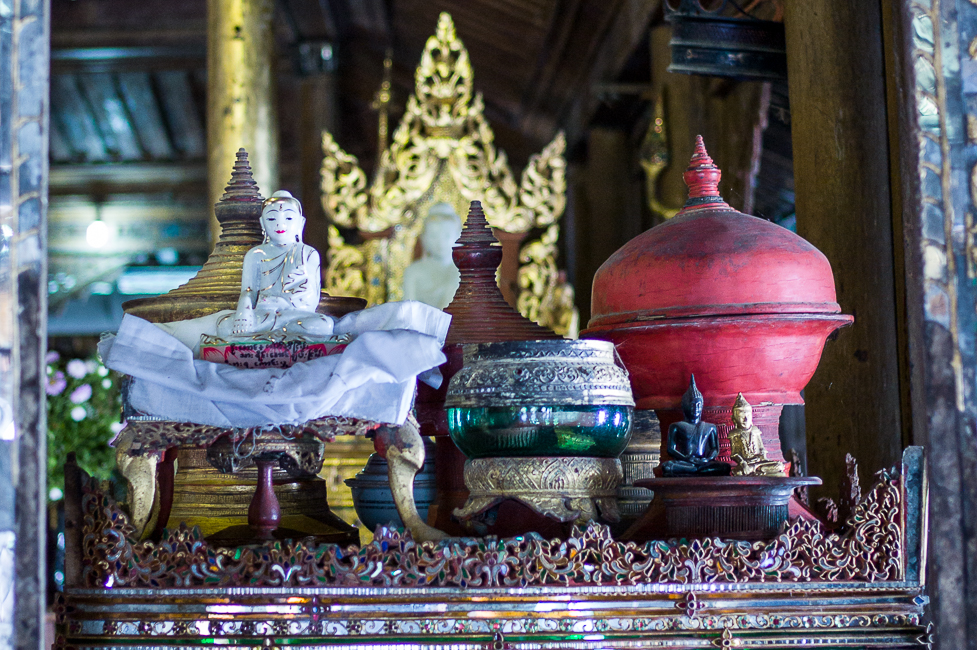
The oval windows give a nice motive also from inside.
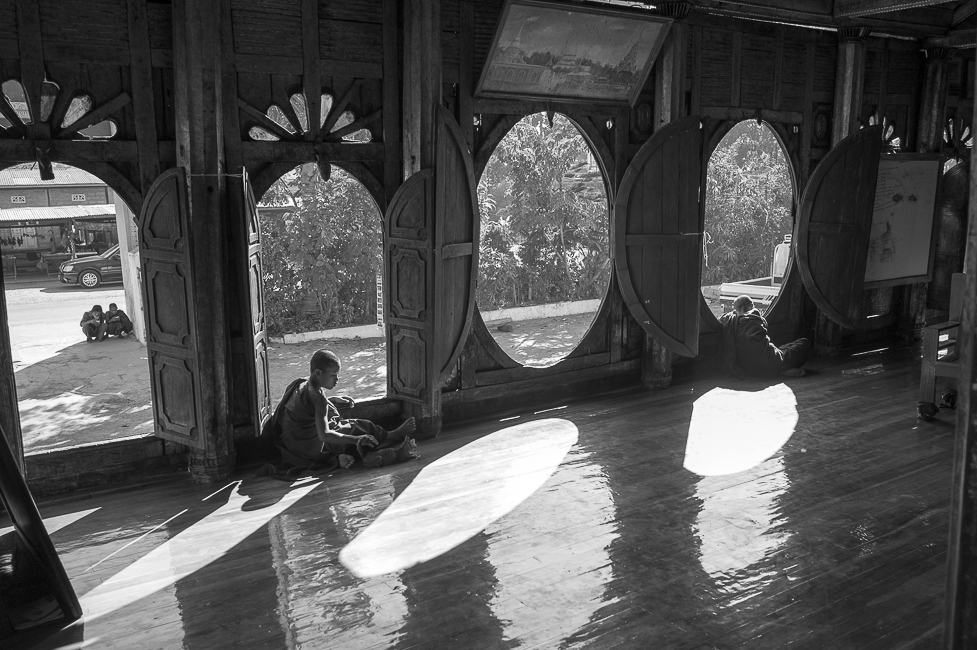
A quick look into the living quarters.
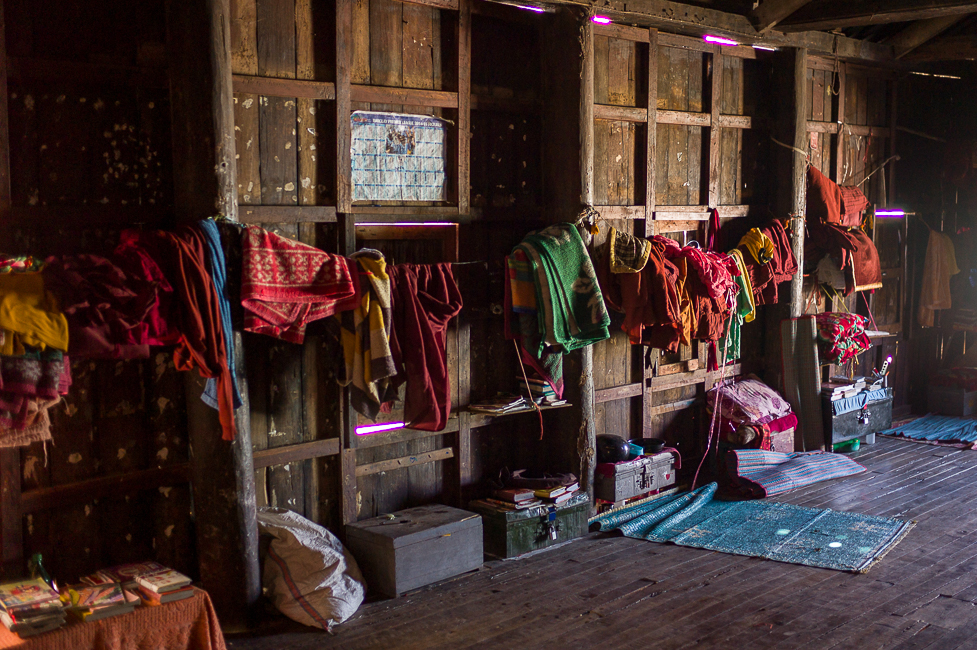
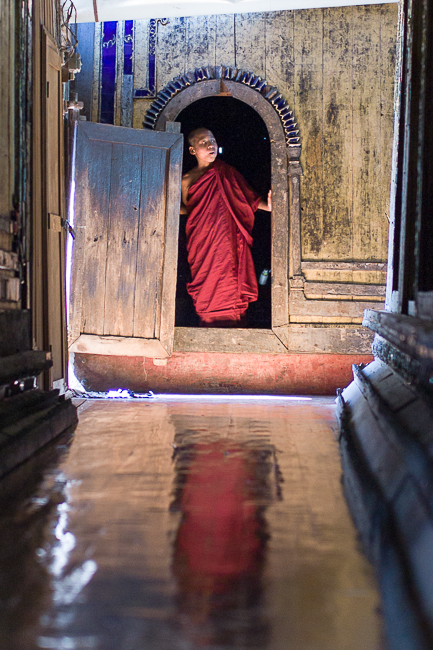
Suddenly novices appear for a short reading. Well this was certainly staged.
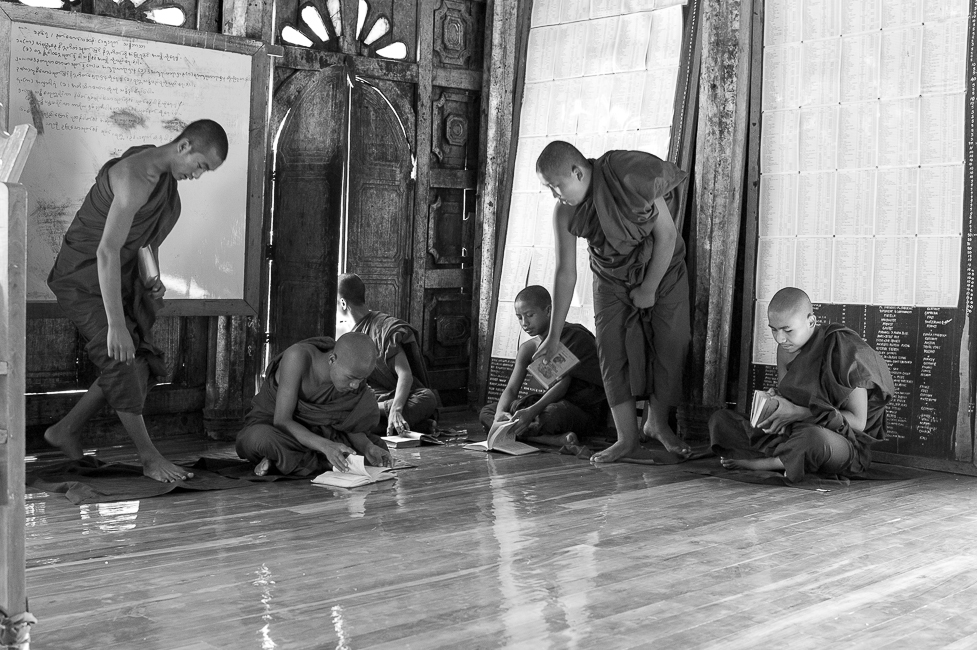
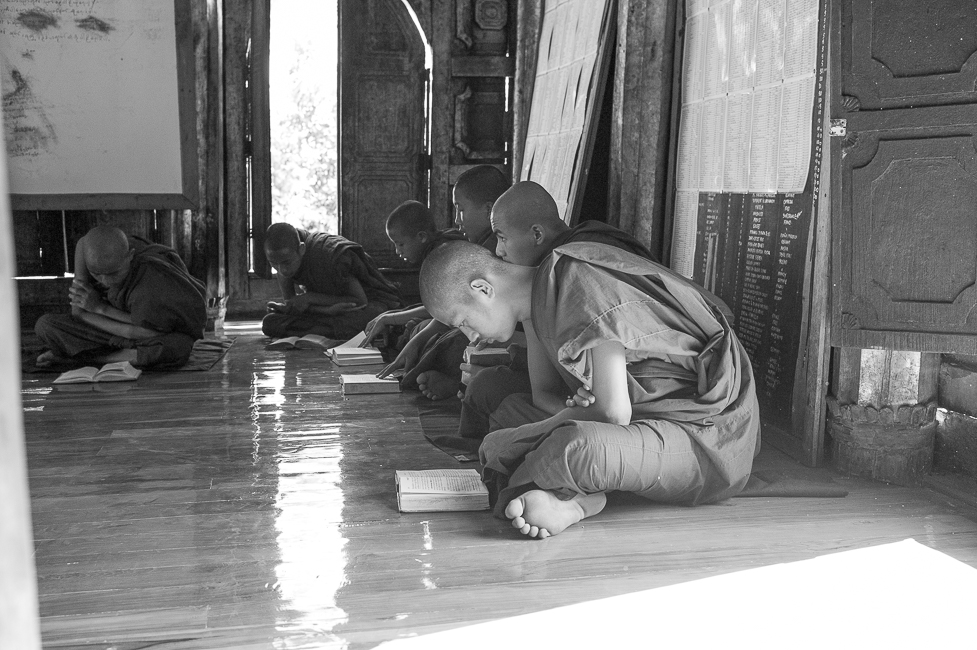
Next to this ordination hall is a modern building where the monks took a sleep at noon.
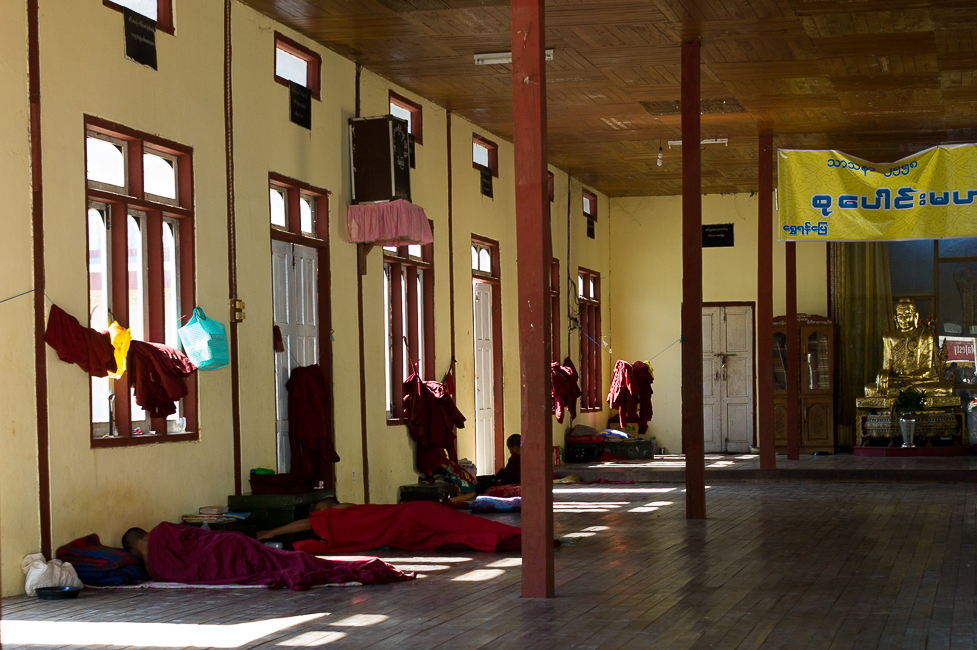
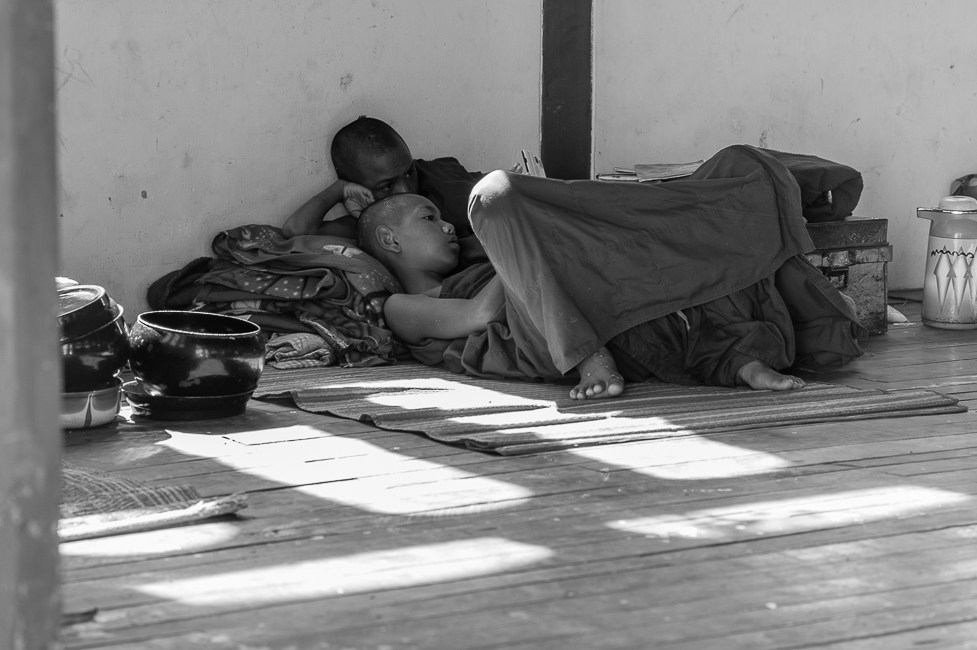
And walking further around you can enter a small courtyard with a pagoda in the middle with hundreds of donated buddha statues donated and put into small niches in the wall. Above teachings of buddha illustrated with glass inlays.
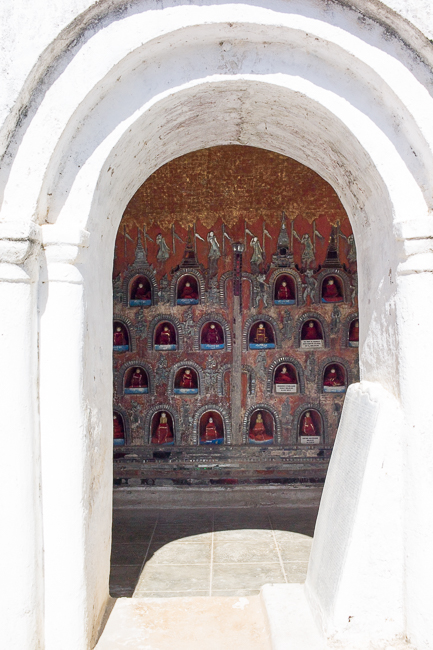
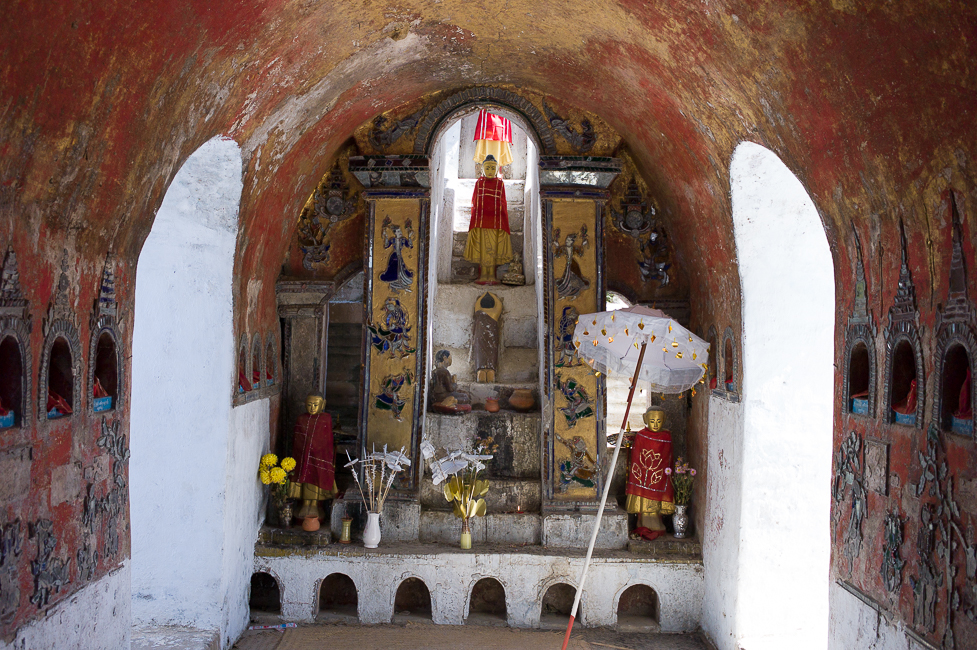
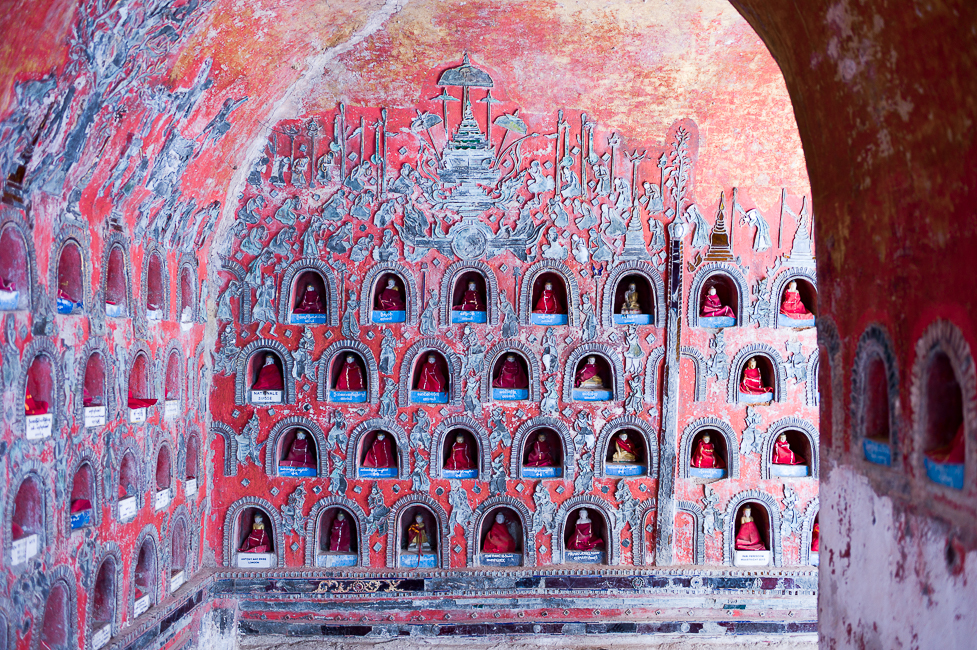
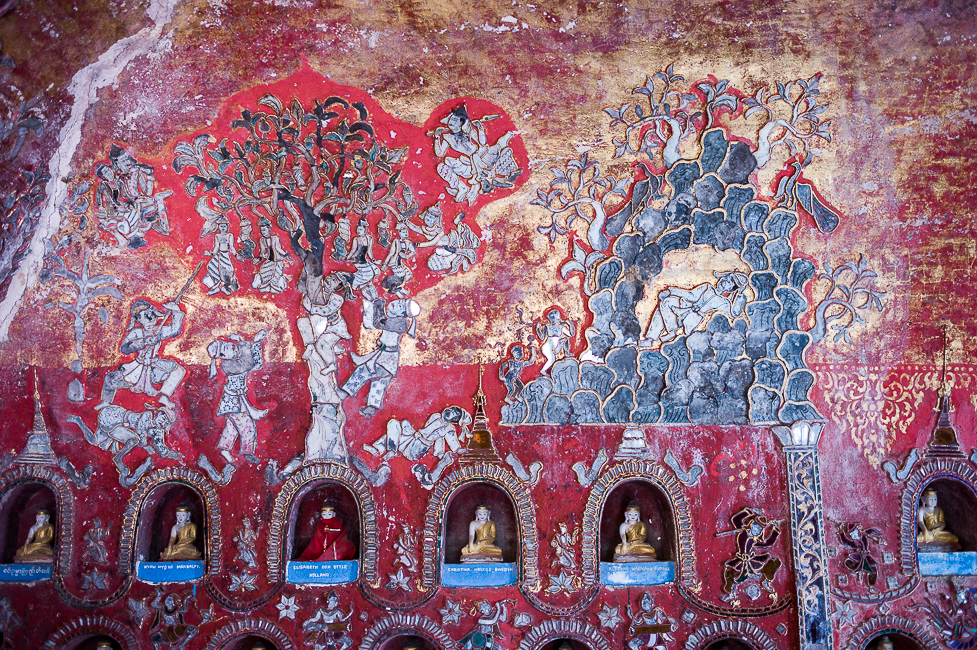
This completed the visit at the first day. At I had spare time on my last day at Inle Lake I went back to find the monastery life completely changed. It was the second day of Shin Pyu. “Shin Pyu” in Myanmar means “initiating into Buddhist Order as a Novice”. The Shin Pyu ceremony is a common event, as a family earns great merit when a son forsakes his childhood life and dons the robe of the monk. The celebration was taking place in the same ordination hall where I had observed the novices taking there naps.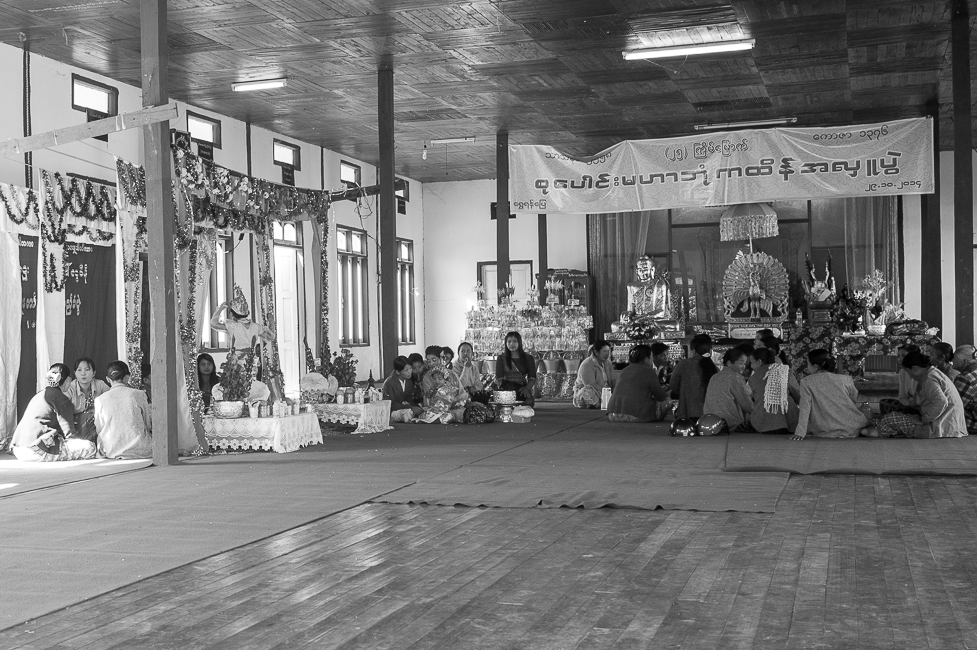
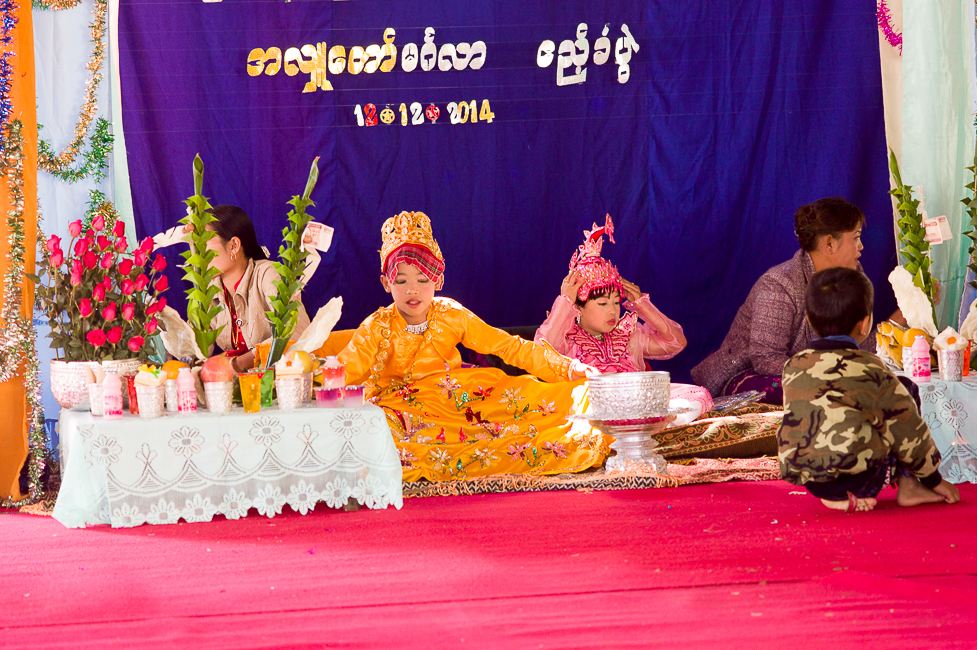
The following text is an excerpt of an article putting the celebration in context of the buddhist belief:
“Lord Buddha was born as Prince Siddhattha, heir to the throne of King Siri Suddhodana and Queen Siri Maha Maya of the Kingdom of Kapilavatthu. He married Princess Yasodhara who bore him a son named Rahula. Crown Prince Siddhattha, on reaching the age of 29, renounced all the worldly pleasures of princely life and retired deep into the forest in the middle of one night in search of the four Noble Truths, the basic of Buddhist doctrine. After six years of austere life as an ascetic, self-denial and steadfast meditation, he finally found the ‘right path’ and attained Buddha hood, which epithet means the state of becoming the ‘Enlightened One’ or the ‘Omniscient One’.
After becoming Gautama Buddha, as he was known by then, he proceeded to Kapilavathu at the invitation of his father. When Princess Yasodhara heard of his arrival in the neighborhood, she sent her son Rahula saying, “My dear son, go to your father, and ask for the inheritance you are entitled to. He had four huge pots of gold before he left the palace.” Rahula therefore went and asked Buddha as instructed. There upon, Buddha replied, “Son Rahula, the inheritance you are now asking are material riches, but they will only perpetuate the sufferings resulting from hankerings after material wealth. The inheritance that I will now give you is the inheritance of the religion, which is more valuable than any other thing. For this, you will have to enter the Buddhist order as a novice. By doing so your mother will automatically acquire the merit and distinction of supported of my religion (sasana dayaka).” Consequently, Rahula was admitted as a novice then and there.
Since then, it has been he cherished desire of Buddhist parents to initiate their sons as novices for a few days at least, before the boys grow up to the manhood. The status of becoming ‘sasana dayaka’ amounts to becoming related to the religion and thereby qualifying to inherit it.”
This explained to me why this young boy was symbolically dressed in cloths like a prince. 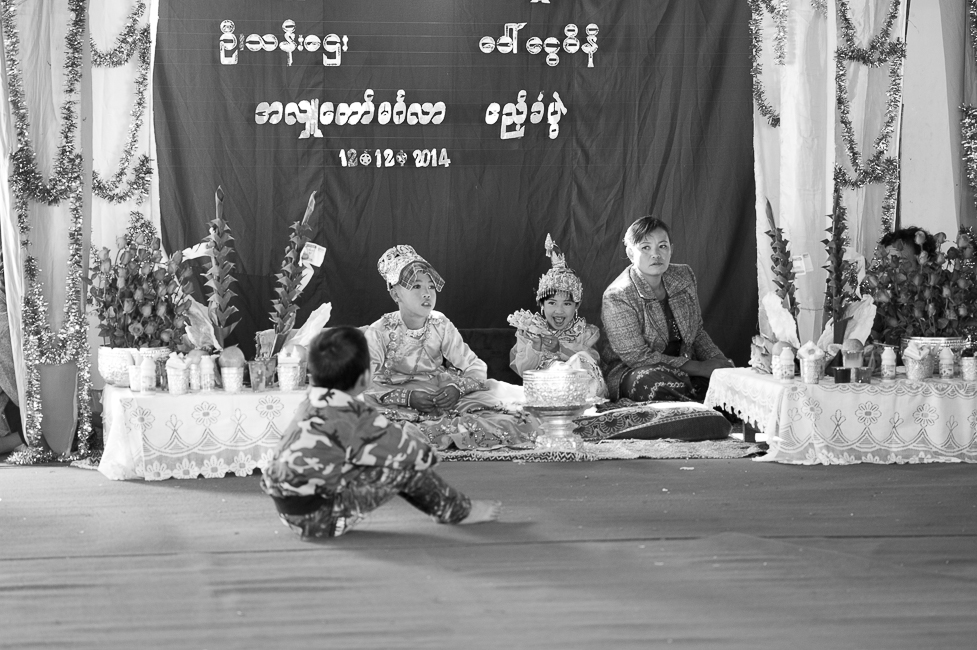
And that he transformed in wearing only simple white cloths when the actual ceremony started for the initiation. The boy had proceeded to a group of senior monks from whom the parents had requested admission into the Buddhist Order in Pali, the language of the Buddhist scriptures. The senior monk was reciting texts from the scriptures. Then the boy stood up and received saffron robes and took the vow of ten precepts. He was required to repeat relevant extracts from the scriptures dictated by the senior monk.
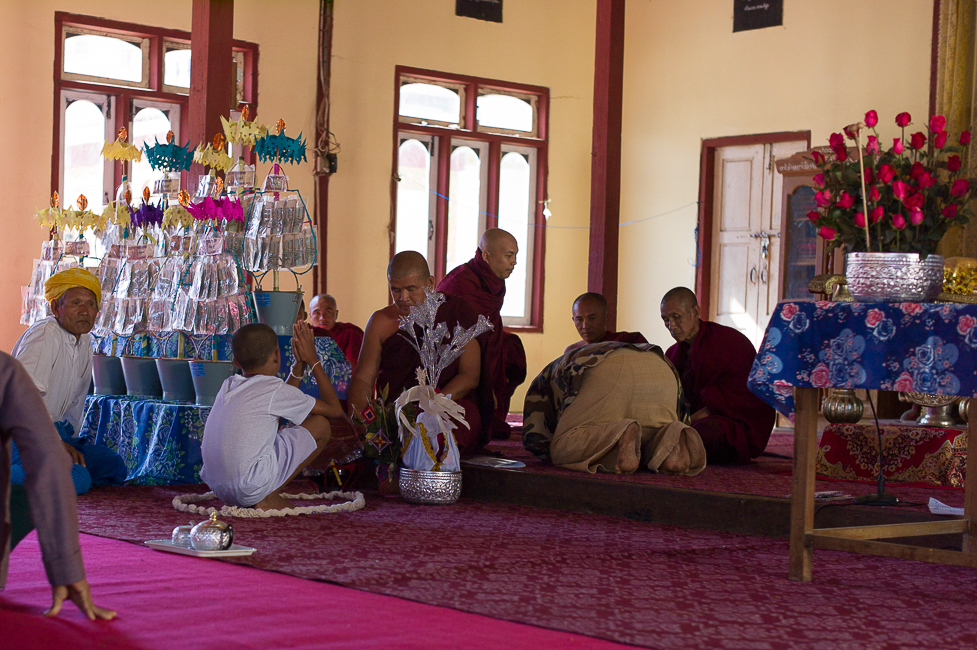
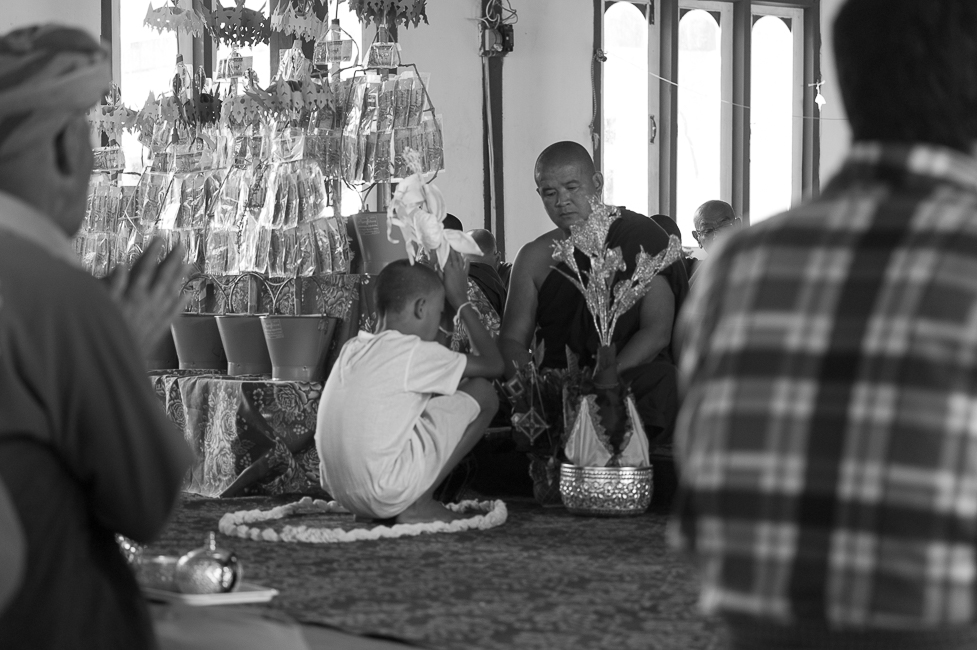
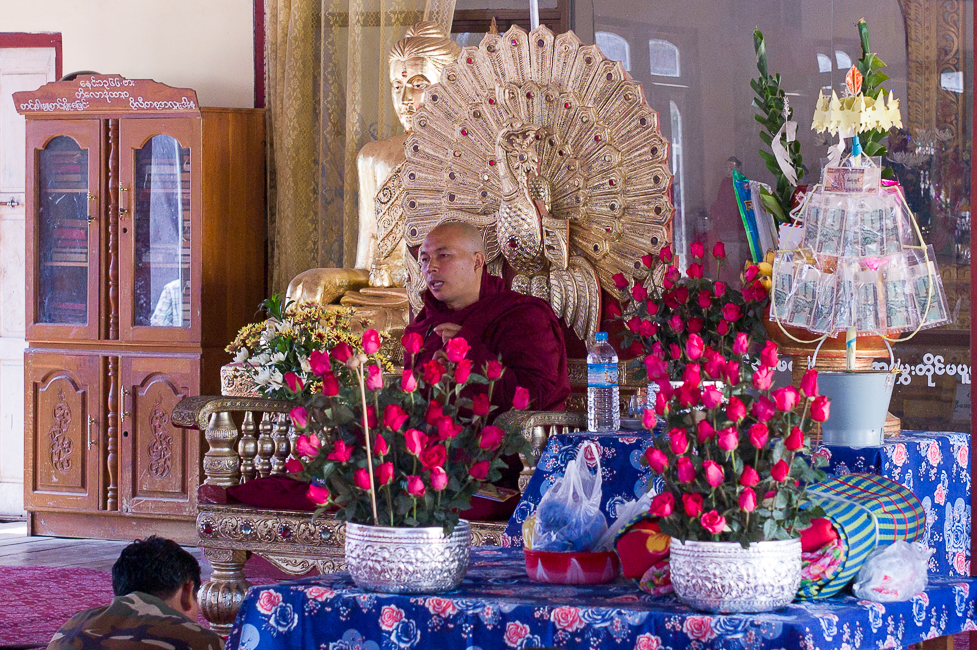
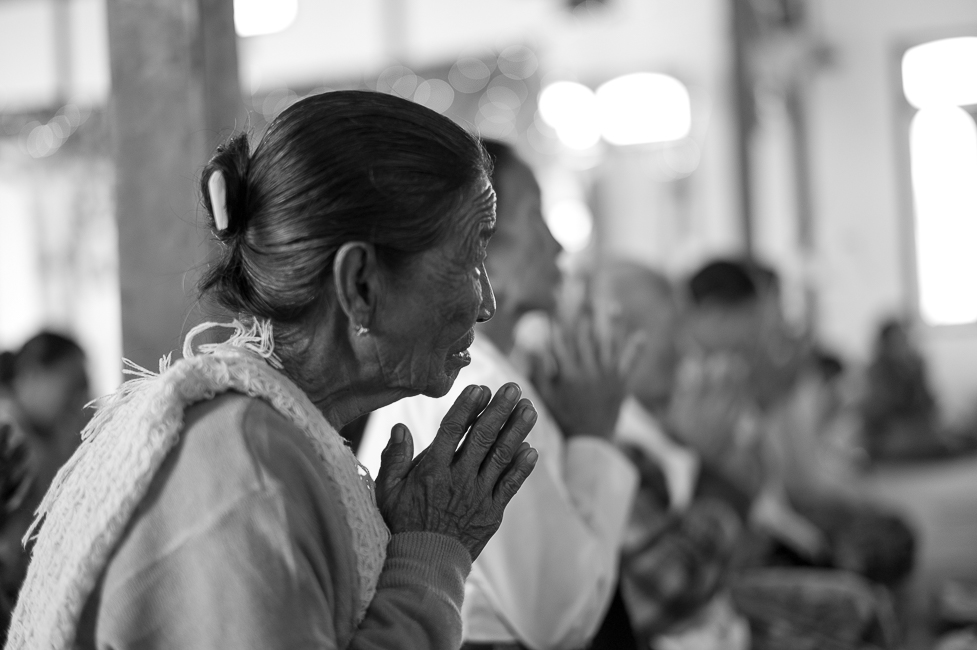
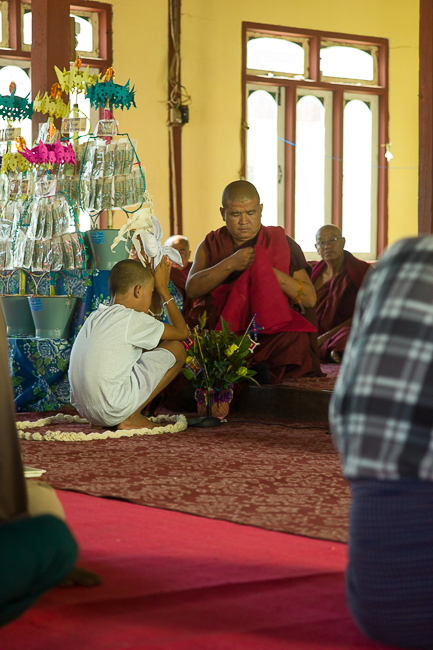
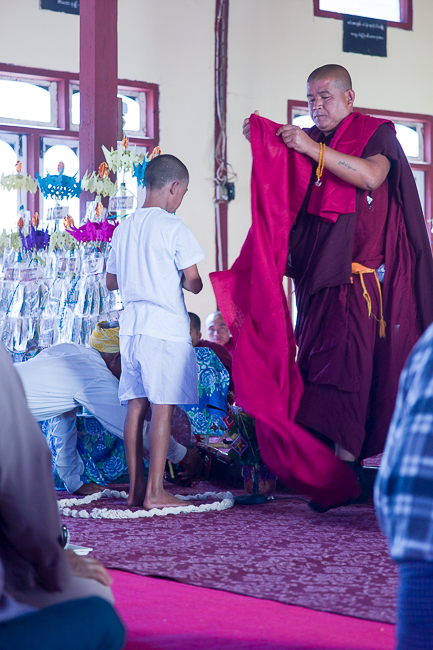
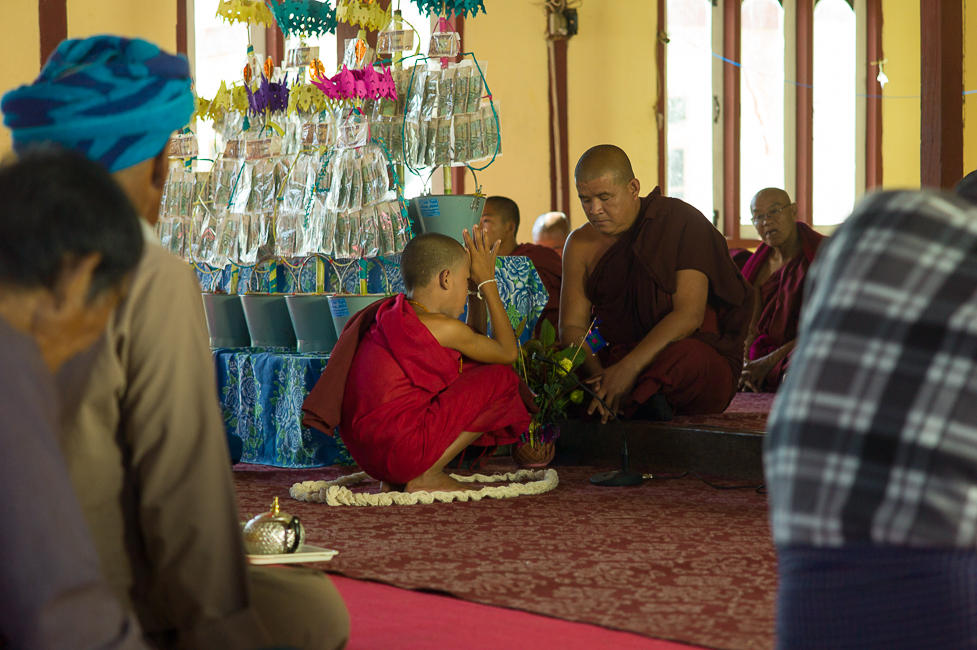
Afterwards the senior monks were picking up the “dollar tree” of donations, given by the parents to the monastery, and left. The novice was now formally accepted into the monastery. I talked to a young girl, who was friend of the family, and she said, that the boys normally stay seven days. But they are not forced, they can leave anytime. Also, they can extend their stay if they like.
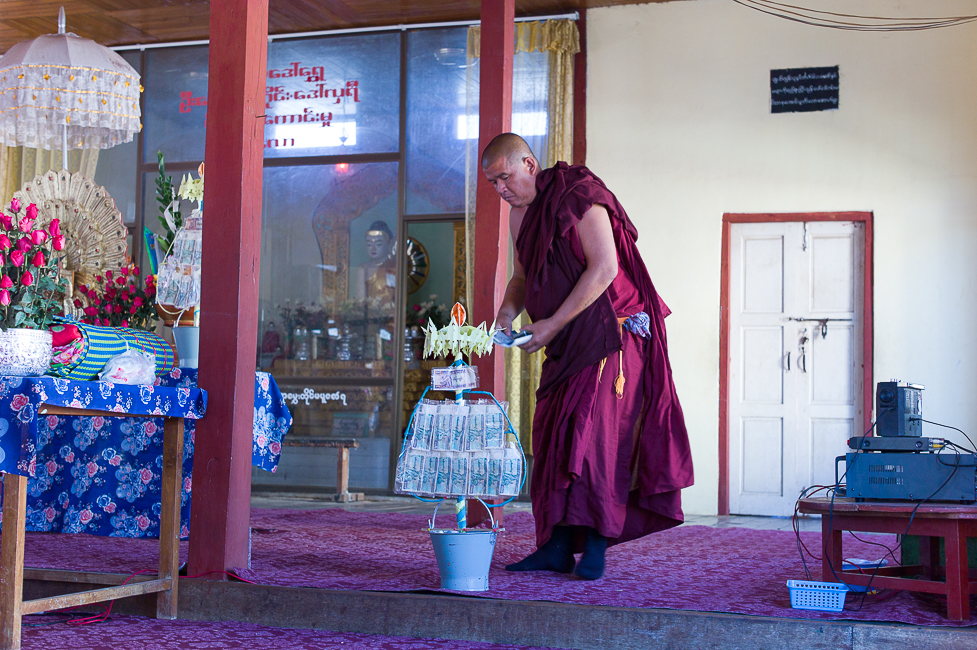
The novice walks away for his week in the monastery.
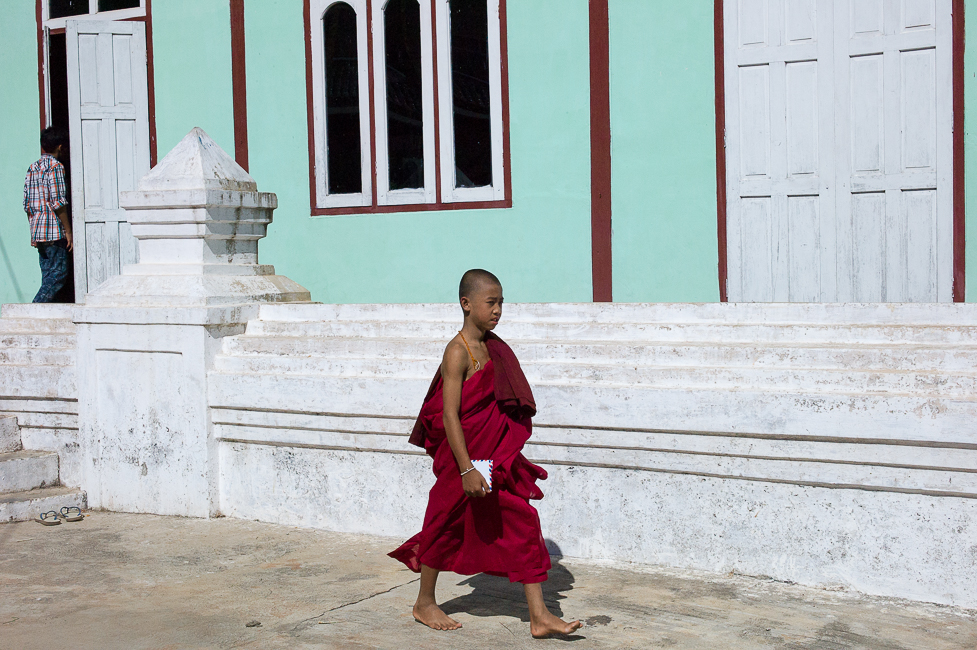
To finish another excerpt from the same article:
After being admitted as novices, they have to live in a monastery but there is no limit as to how long they should remain as novices. It depends on the boy’s desire and ability to withstand a life of austerity. The difficult part, particularly for the younger ones, is to fast from noon till next dawn. Incidentally, a day for religious purposes begins at dawn and not at midnight as in the western calendar. So a novice cannot get up after midnight and break his fast thinking the day already passed. He can only eat after dawn. There are two main meals for each day; breakfast at dawn, and the lunch that must be finished before noon. In the evening, novices and monks are allowed to take soft drinks or juice.
For further reading, here is the link:
http://www.myanmars.net/myanmar-culture/myanmar-novicehood-shinpyu.htm
Leave a Reply